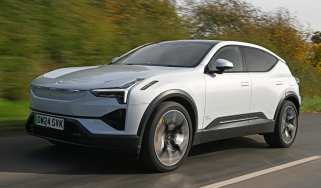Tesla Supercharger network explained
Tesla operates a network of rapid chargers known as Superchargers – here’s everything you need to know
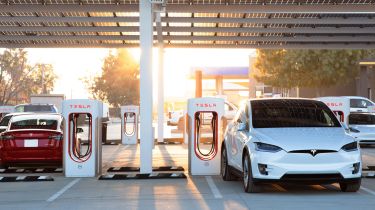
Tesla is known for more than just electric family cars, the bullet-proof Cybertruck and a somewhat controversial CEO – its public Supercharger network is also one of the best in the business. It offers some of the fastest charging speeds in the UK and more locations are being installed every month – both contributing factors to Tesla’s first-place finish in our 2024 Driver Power survey of the best public charging stations.
The Supercharger network was originally free to use and exclusive to Tesla drivers, a move that undoubtedly increased Tesla sales in the brand’s early years, however, that is no longer the case in 2024. There are different versions of Tesla’s Supercharger to contend with, as well as its separate network of Destination chargers – all of which will be covered in this guide. Before that, let’s start with the basics…
What is a Tesla Supercharger?
A Tesla Supercharger is an electric car rapid-charger. Despite sharing the same name, they have nothing to do with the performance-boosting devices found attached to combustion engines. Superchargers are easily identified by their bright red accents and Tesla branding and are often found in car parks, service stations and other common EV public charging locations.
All Superchargers in the UK use the European-standard CCS charging port and typically deliver faster charging speeds than most public rapid-chargers. The latest ‘V4’ Superchargers can charge at a speed up to 250kW, whereas most public rapid-chargers tend to top out at 100kW. This translates to faster charging times for cars compatible with such high speeds.
The network originated in the USA and has expanded across the globe over the past decade. At the time of writing, there are over 1,200 Superchargers in the UK spread over 130 locations. There are currently four versions of Supercharger: V1, V2, V3 and V4, with charging speeds improving with each generation.
Can I use a Supercharger if I don’t own a Tesla?
Yes you can, but only with certain Superchargers and not with every electric car. The Supercharger network was originally reserved for Tesla drivers, but since 2022, the firm has opened up a small number of V3 Superchargers to other EV drivers. V1 and V2 Superchargers remain exclusive to Tesla drivers.
Tesla’s latest V4 Superchargers are available for all EVs to use, as long as they use the CCS charging port (all but the oldest electric cars do). These are still fairly new, so there aren’t many across the UK yet, but Tesla plans to install more in the future.
How do I use a Tesla Supercharger?
Thankfully, using a Supercharger isn’t all that different to filling up a petrol car. However, there are some key differences between charging a Tesla and charging a different EV at a Supercharger.
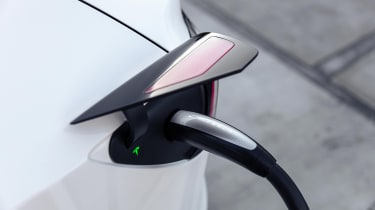
For Tesla drivers
It couldn’t be more straightforward for Tesla drivers. Pull up to a charger, press the button on your infotainment screen to open the charge port, and plug the connector in. The light will turn green once your Tesla is charged. There’s no need to pay at the charger – simply unplug the connector and the account linked to your car will be charged automatically.
While plugged in, your car’s charging progress will be displayed on the central infotainment screen. However, this data can also be accessed via the Tesla companion app on your smartphone. This means you can go off elsewhere and come back when you are notified that your car has reached the desired level of charge.
For non-Tesla drivers
It’s slightly different if you want to use a Supercharger in a non-Tesla EV. To use one of the V3 Superchargers open to all EVs, you will need a Tesla account and the Tesla app.
Open the app and select ‘Charge your non-Tesla’. Find your Supercharger site, enter your payment details, select the stall you wish to charge at and plug in. Once charged, unplug the connector and your account will automatically be charged.
The same method works for newer V4 Superchargers, but these also feature a digital screen that allows you to pay by tapping your debit or credit card on the machine. The Tesla app is not required if you wish to pay directly at the charger.
How much does it cost to use a Tesla Supercharger?
It is a common misconception that all Tesla owners can access the Supercharger network for free. Only Tesla owners who ordered their car new prior to January 15th 2017 get complete access to the entire Supercharger network for free. Those who purchased their Tesla more recently will need to pay each time they plug in at one of the many Superchargers.
Supercharger charging costs vary from site to site, and are affected by the time of day as well as how busy the site is. V4 Superchargers are fixed at a minimum cost of 50p per kWh, with prices usually sitting somewhere up to 70p per kWh.
Tesla uses a two-tier pricing system for Tesla and non-Tesla drivers, the latter generally paying around 10p more per kWh. Non-Tesla drivers who use Superchargers frequently can sign up to the Supercharger Membership in the Tesla app for £11 per month. This grants access to the lower pricing tier normally exclusive to Tesla drivers.
It’s also worth noting that an ‘Idle Fee’ of 50p per minute applies if you leave your car at a Supercharger after it has finished charging. This is waived if the car is moved within the first five minutes, and only applies when the Supercharger station is over 50% capacity. At 100% capacity, the fee doubles to £1 per minute, potentially leading to a hefty fine if you leave your car unattended for too long once it’s fully charged.
How fast does a Tesla Supercharger charge?
Tesla V3 and V4 Superchargers can charge at speeds up to 250kW, making them some of the fastest in the UK. Of course, this speed can only be accessed if you have an EV capable of charging at 250kW.
How long your Tesla will take to charge depends on which model and battery specification you own, plus how full the battery is when you plug in. A regular Tesla Model 3 can charge at speeds of up to 170kWh and takes 25 minutes to recharge from 10-80%. The Model 3 Long Range with its bigger battery is compatible with the full 250kWh, taking 27 minutes to complete the same charge.
Where’s a Tesla Supercharger near me?
There are plenty of ways to search for your nearest location. You can visit the Tesla website and type in your location to see the nearest available chargers. EV drivers can also make use of the Tesla companion app to search for a nearby location.
Perhaps more impressive is the ability to access this information right from a Tesla’s infotainment screen. Your car can search for nearby chargers and incorporate them into your journey if necessary. Once you begin to head towards a charger, the car can automatically ‘precondition’ itself for charging whilst en-route, meaning that you will get the optimum charging efficiency when you arrive.
What is the Tesla Destination charging network?
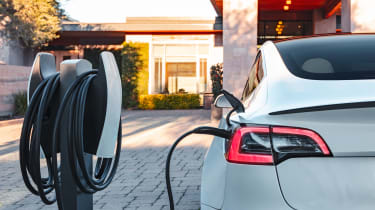
As well as its Superchargers, Tesla operates a network of less powerful ‘Destination’ chargers. As the name suggests, these are usually located at destinations where you plan to leave your car for a longer period of time – for example, hotel car parks, airports or shopping centres. Visit the Tesla website to view a full list of UK locations.
Destination chargers can only charge at speeds of up to 22kWh, meaning a recharge will take much longer than a Supercharger. The upside is that many of these chargers are free to use for Tesla drivers, but be wary of any parking charges enforced at the destination.
Frequently Asked Questions
Interested in buying an EV? Read our list of the best electric cars currently on sale...
Recommended
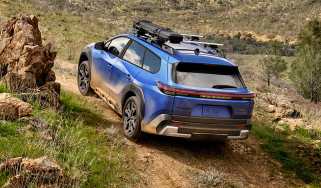
New Subaru Trailseeker revealed as rugged electric SUV with 375bhp
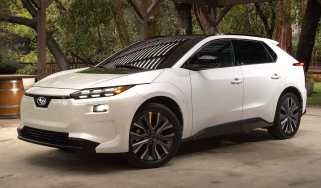
New Subaru Solterra brings more range, power and polish
Most Popular
Tips & advice

Car dashboard warning lights: what does each symbol mean?

Electric car charging stations: public networks, charger types, apps and maps

